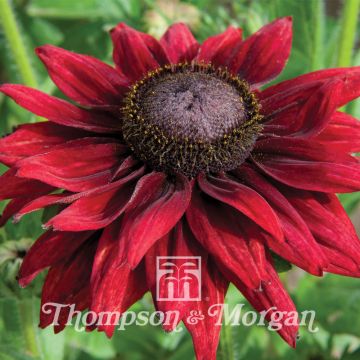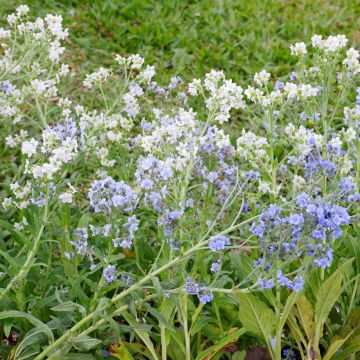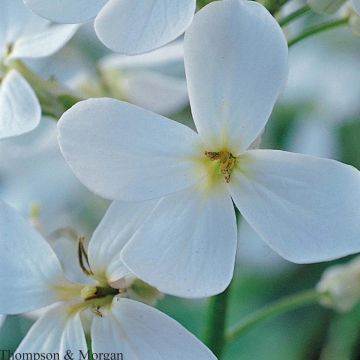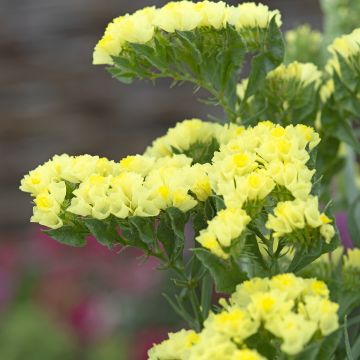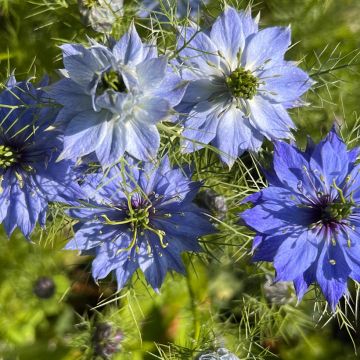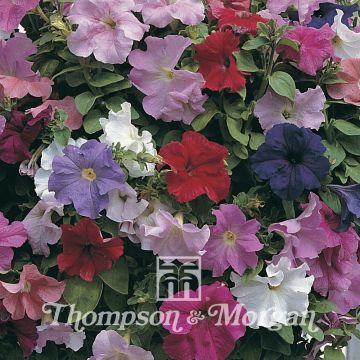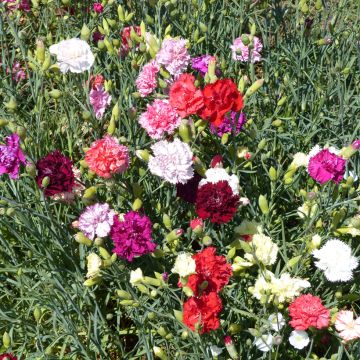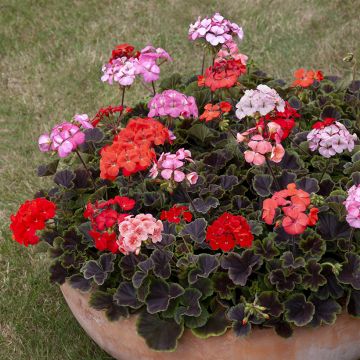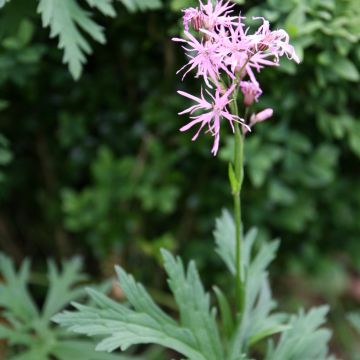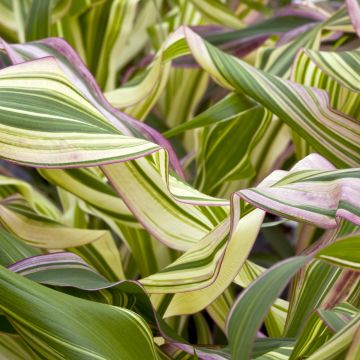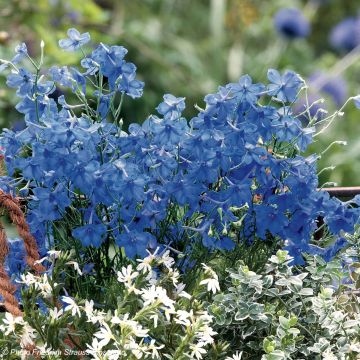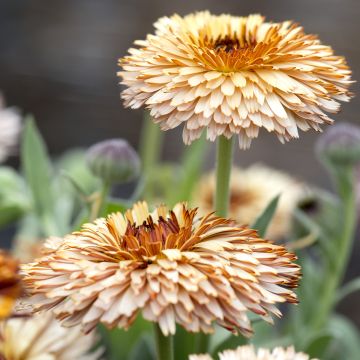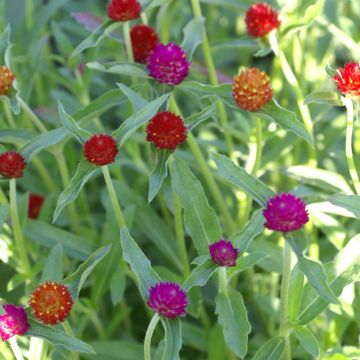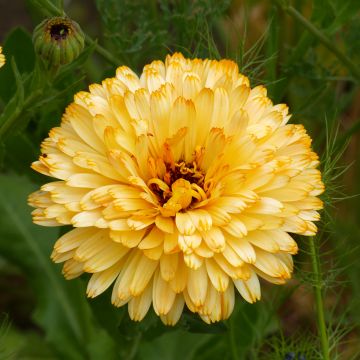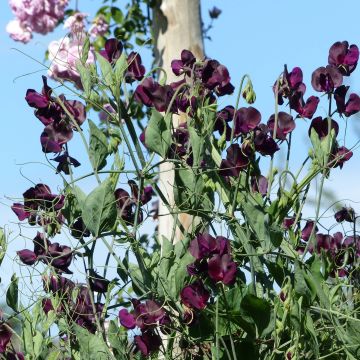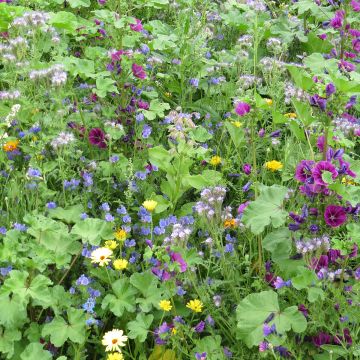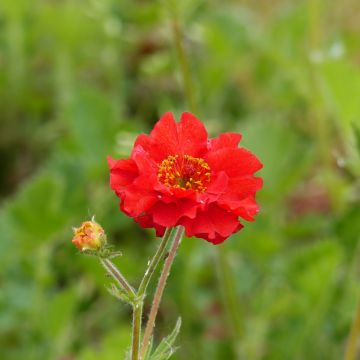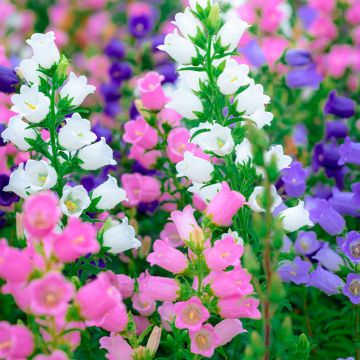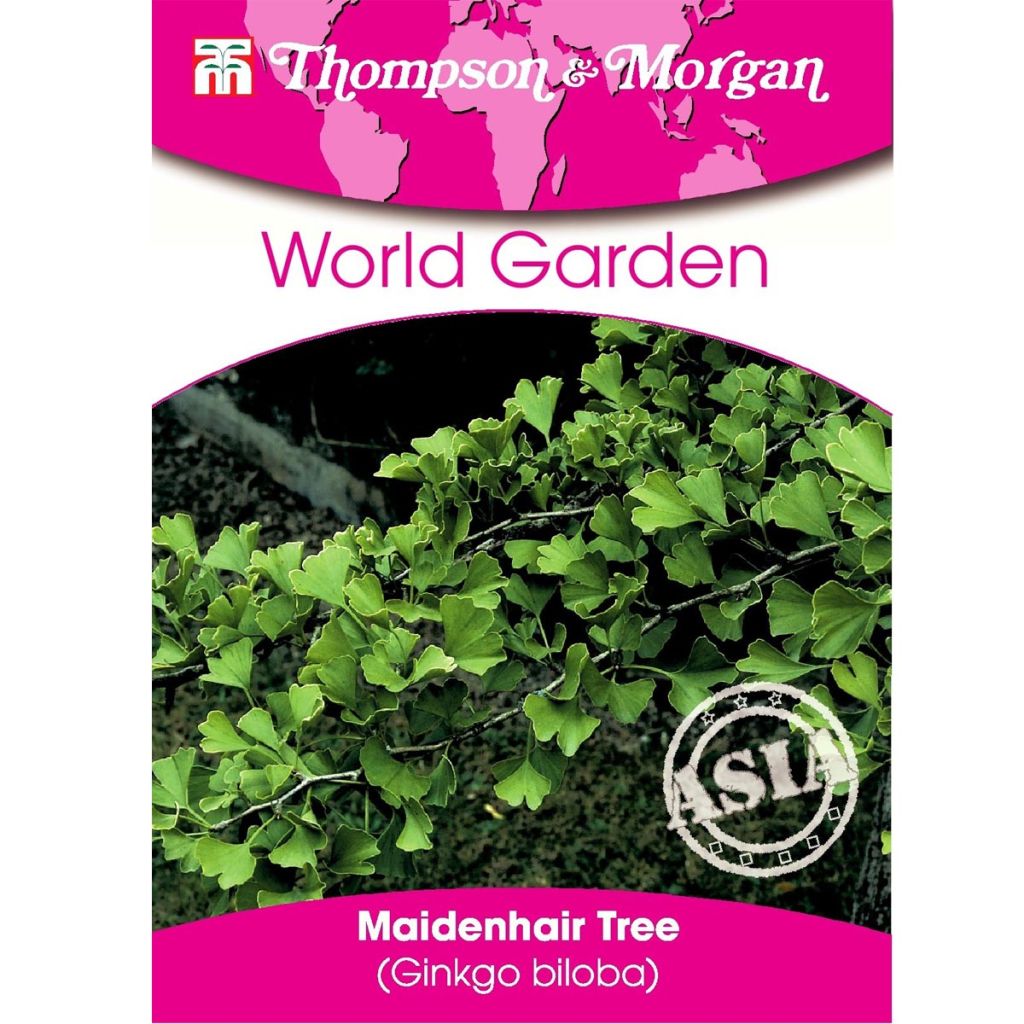

Graines de Ginkgo biloba - Arbre aux quarante écus
Ginkgo biloba seeds
Ginkgo biloba
Maidenhair Tree, Living Fossil Tree
This plant carries a 6 months recovery warranty
More information
We guarantee the quality of our plants for a full growing cycle, and will replace at our expense any plant that fails to recover under normal climatic and planting conditions.
Seed-only orders are dispatched by sealed envelope. The delivery charge for seed-only orders is €3.90.
Delivery to Corse prohibited: UE law prohibits the import of this plant from mainland France to Corse as part of the fight against Xylella fastidiosa. Please accept our sincere apologies.
More information
Does this plant fit my garden?
Set up your Plantfit profile →
Description
The Ginkgo biloba, also known as the 40-Crown Tree or Silver Apricot Tree, is an original and remarkable ornamental tree. The fan-shaped leaves turn a very bright gold yellow in the autumn. It's a tree with exceptional hardiness.
The 40-crown Tree is a unique plant from China, the only member of the Ginkgoaceae family. Although it's often considered a conifer, it stands out as a one-of-a-kind plant. The tree is known as a "living fossil" or "prehistoric" because the first Ginkgos appeared on Earth about 300 million years ago.
Its growth is slow, it can reach 40 metres (131 feet 2 inches) in a natural medium, and its average height in Europe is of the order of 15 to 20 metres. The habit evolves over time, initially columnar with a narrow crown, and it rounds off progressively while maintaining an airy silhouette.
It's a tree that is easily recognisable by its lobed leaves, which resemble fans. They are deciduous and measure from 5 to 8 cm (2 to 3.1 in) wide. It is dioecious (the two sexes do not coexist on the same young plant, there are male Ginkgos and female Ginkgos) and bears in the spring insignificant flowers, in catkins.
The Ginkgo is of exceptional hardiness, it is often cited as being the only tree that survived the atomic bomb during the attack on Hiroshima, and it was traditionally planted around temples to protect them from fires. With a remarkable longevity as well as being very resistant to pollution, diseases and parasites, it is reputed to be able to live 4000 years. It is hardy down to - 30 ° (86 °F) C.
Not demanding about the nature of the soil, it even accepts limestone, provided that the soil is well drained and deep enough to accommodate its tap root. You should plant it in the sun or in semi-shade, with lots of space around it to enjoy its magnificent autumn colour.
The Ginkgo biloba is far from being reserved for Asian-style gardens, it will find its place in almost all gardens large enough to accommodate it once it is mature. Its pot culture is also possible, ideally in a removable type "orangerie" container. Experts can also train it as a Bonsai.
When planting a Ginkgo tree, it's best to avoid planting it close to the house. Female trees produce fruits that are the size of a mirabelle plum. These fruits fall off when ripe and release an unpleasant smell as they decompose. However, the tree's beauty makes it worth the temporary inconvenience. The leaves of the Ginkgo tree can be used for therapeutic purposes. In China and Japan, the fruits are eaten fresh or roasted.
Report an error about the product description
Foliage
Plant habit
Botanical data
Ginkgo
biloba
Ginkgoaceae
Maidenhair Tree, Living Fossil Tree
Southeast Asia
Other Thompson and Morgan seeds
Planting and care
Growing Ginkgo biloba from seeds is a relatively straightforward process, but it takes time and involves a few steps. Here's what you need to do:
1. Cold stratification: When you receive your seeds, put them in a closed bag in your refrigerator's vegetable compartment for two months. This step is optional, but it helps improve the germination rate.
2. Scarification: In the spring, soak the seeds you've previously scratched with sandpaper or slightly cut with a knife in warm water for two days. This process helps the seeds to get moist and germinate faster.
3. Planting: Put the seeds in a tray or pot filled with damp sand and cover them with another centimetre of sand. Spray gently and keep them warm and in the light, ideally in a propagator or above a radiator. Keep the soil moist until germination, which should occur between three weeks and a month (sometimes it can take longer).
4. Transplantation: Once the roots are well-formed, transfer the young plants into deep pots, at least 15 cm or 5.9 inches deep, filled with sand and compost. This is where your Ginkgos can grow for the first two years.
Sowing period
Intended location
This item has not been reviewed yet - be the first to leave a review about it.
Flower seeds
Haven't found what you were looking for?
Hardiness is the lowest winter temperature a plant can endure without suffering serious damage or even dying. However, hardiness is affected by location (a sheltered area, such as a patio), protection (winter cover) and soil type (hardiness is improved by well-drained soil).

Photo Sharing Terms & Conditions
In order to encourage gardeners to interact and share their experiences, Promesse de fleurs offers various media enabling content to be uploaded onto its Site - in particular via the ‘Photo sharing’ module.
The User agrees to refrain from:
- Posting any content that is illegal, prejudicial, insulting, racist, inciteful to hatred, revisionist, contrary to public decency, that infringes on privacy or on the privacy rights of third parties, in particular the publicity rights of persons and goods, intellectual property rights, or the right to privacy.
- Submitting content on behalf of a third party;
- Impersonate the identity of a third party and/or publish any personal information about a third party;
In general, the User undertakes to refrain from any unethical behaviour.
All Content (in particular text, comments, files, images, photos, videos, creative works, etc.), which may be subject to property or intellectual property rights, image or other private rights, shall remain the property of the User, subject to the limited rights granted by the terms of the licence granted by Promesse de fleurs as stated below. Users are at liberty to publish or not to publish such Content on the Site, notably via the ‘Photo Sharing’ facility, and accept that this Content shall be made public and freely accessible, notably on the Internet.
Users further acknowledge, undertake to have ,and guarantee that they hold all necessary rights and permissions to publish such material on the Site, in particular with regard to the legislation in force pertaining to any privacy, property, intellectual property, image, or contractual rights, or rights of any other nature. By publishing such Content on the Site, Users acknowledge accepting full liability as publishers of the Content within the meaning of the law, and grant Promesse de fleurs, free of charge, an inclusive, worldwide licence for the said Content for the entire duration of its publication, including all reproduction, representation, up/downloading, displaying, performing, transmission, and storage rights.
Users also grant permission for their name to be linked to the Content and accept that this link may not always be made available.
By engaging in posting material, Users consent to their Content becoming automatically accessible on the Internet, in particular on other sites and/or blogs and/or web pages of the Promesse de fleurs site, including in particular social pages and the Promesse de fleurs catalogue.
Users may secure the removal of entrusted content free of charge by issuing a simple request via our contact form.
The flowering period indicated on our website applies to countries and regions located in USDA zone 8 (France, the United Kingdom, Ireland, the Netherlands, etc.)
It will vary according to where you live:
- In zones 9 to 10 (Italy, Spain, Greece, etc.), flowering will occur about 2 to 4 weeks earlier.
- In zones 6 to 7 (Germany, Poland, Slovenia, and lower mountainous regions), flowering will be delayed by 2 to 3 weeks.
- In zone 5 (Central Europe, Scandinavia), blooming will be delayed by 3 to 5 weeks.
In temperate climates, pruning of spring-flowering shrubs (forsythia, spireas, etc.) should be done just after flowering.
Pruning of summer-flowering shrubs (Indian Lilac, Perovskia, etc.) can be done in winter or spring.
In cold regions as well as with frost-sensitive plants, avoid pruning too early when severe frosts may still occur.
The planting period indicated on our website applies to countries and regions located in USDA zone 8 (France, United Kingdom, Ireland, Netherlands).
It will vary according to where you live:
- In Mediterranean zones (Marseille, Madrid, Milan, etc.), autumn and winter are the best planting periods.
- In continental zones (Strasbourg, Munich, Vienna, etc.), delay planting by 2 to 3 weeks in spring and bring it forward by 2 to 4 weeks in autumn.
- In mountainous regions (the Alps, Pyrenees, Carpathians, etc.), it is best to plant in late spring (May-June) or late summer (August-September).
The harvesting period indicated on our website applies to countries and regions in USDA zone 8 (France, England, Ireland, the Netherlands).
In colder areas (Scandinavia, Poland, Austria...) fruit and vegetable harvests are likely to be delayed by 3-4 weeks.
In warmer areas (Italy, Spain, Greece, etc.), harvesting will probably take place earlier, depending on weather conditions.
The sowing periods indicated on our website apply to countries and regions within USDA Zone 8 (France, UK, Ireland, Netherlands).
In colder areas (Scandinavia, Poland, Austria...), delay any outdoor sowing by 3-4 weeks, or sow under glass.
In warmer climes (Italy, Spain, Greece, etc.), bring outdoor sowing forward by a few weeks.

































